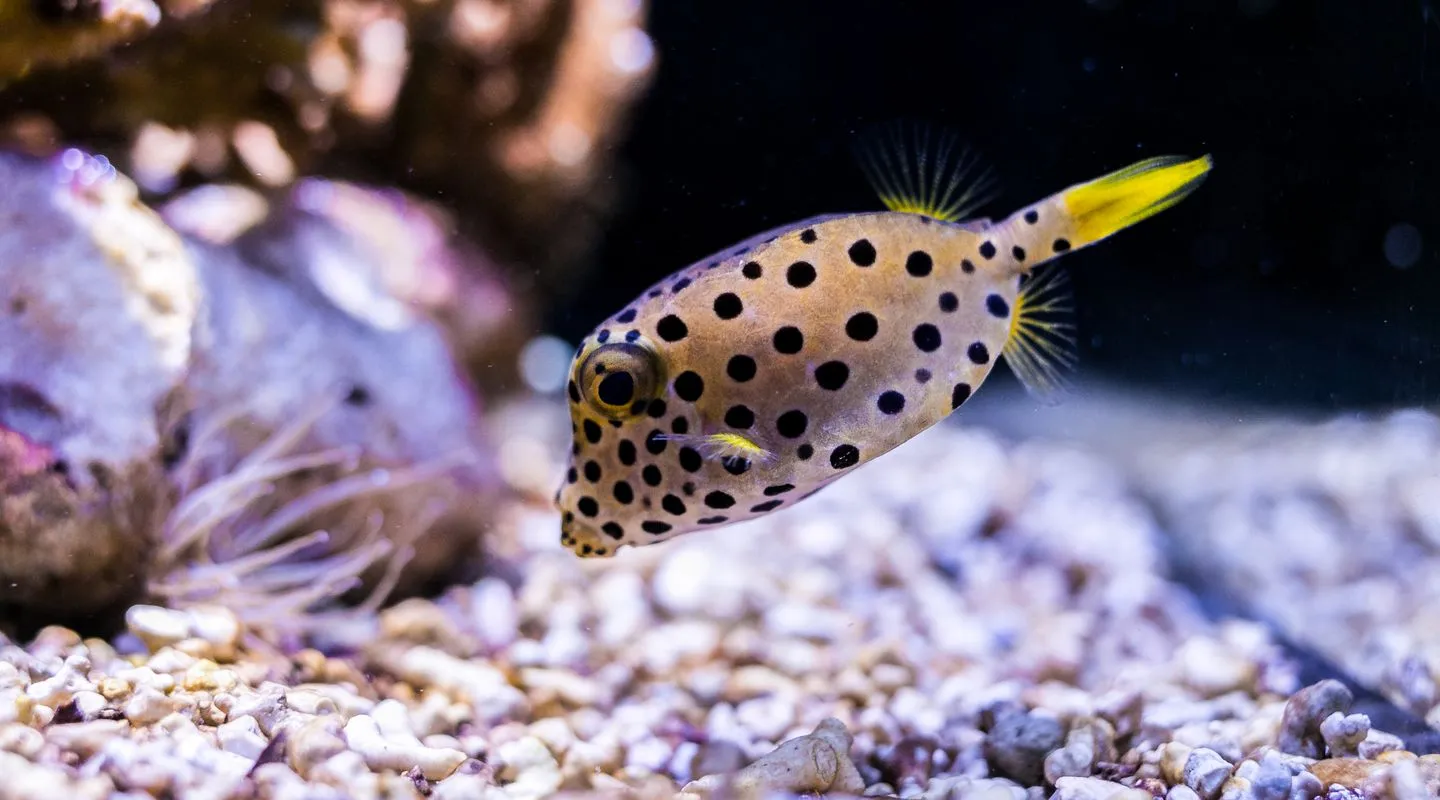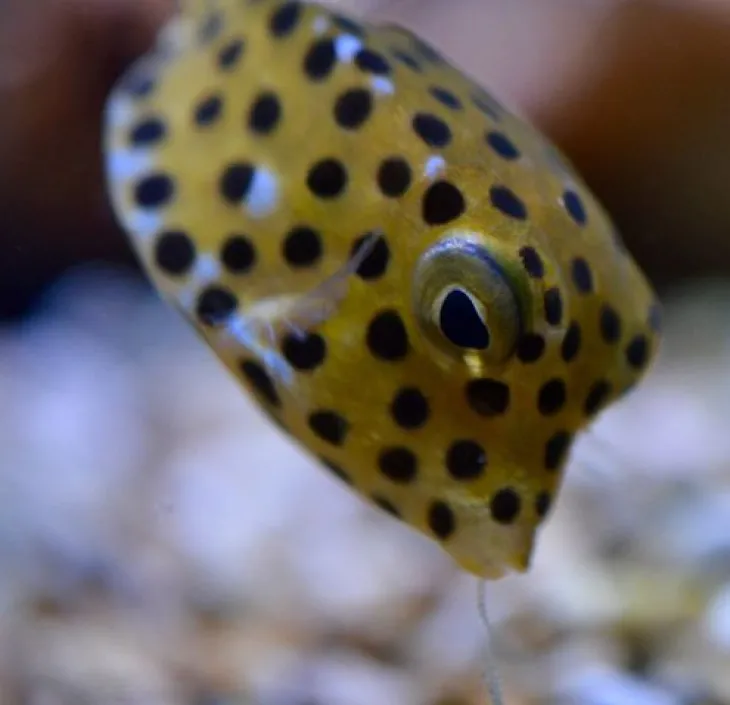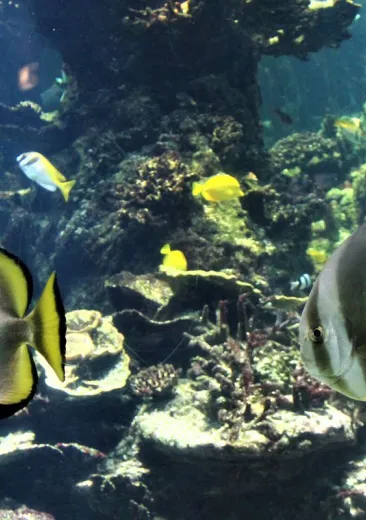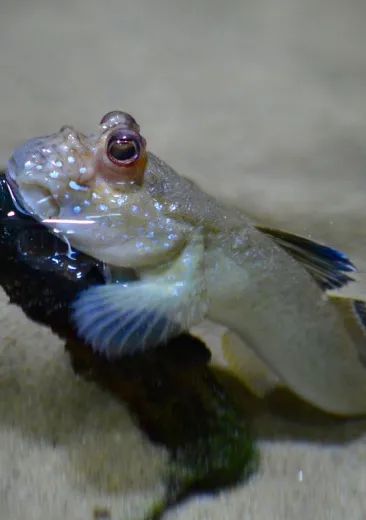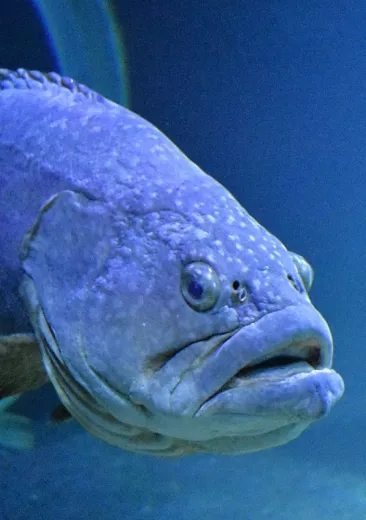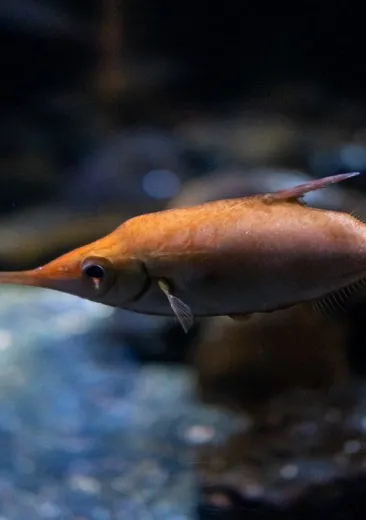The yellow boxfish is mostly solitary but can live in a harem with one male and 2 to 4 females at breeding time.
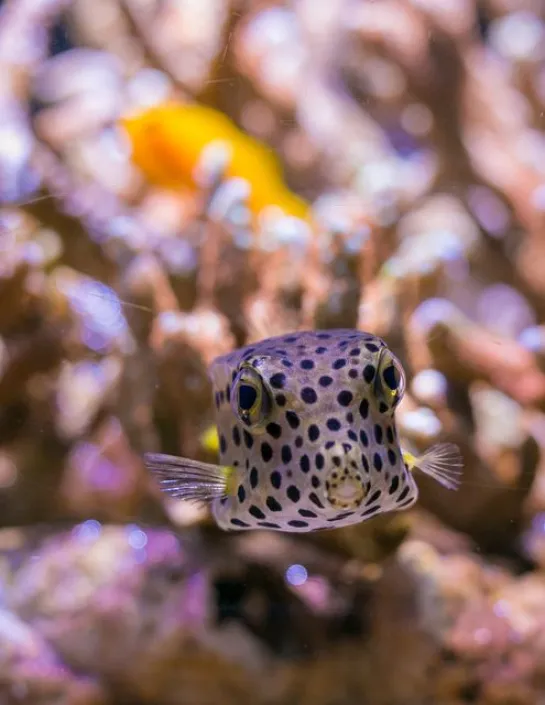
Identity card
Yellow Boxfish
- Scientific name:
- Ostracion cubicus, Kentrocapro
- Family:
- Ostraciidae
- Class:
- Actinopterygii
- Phylum:
- Chordata
- Year of description:
- Linnaeus, 1758
- IUCN Status:
- Least Concern
- Distribution:
-
Red Sea, Pacific Ocean, from the Hawaiian Islands and southern Japan to the Tuamotu Islands and New Zealand.
- Habitat:
-
Typically between depths of 1 and 50 metres.
- Size:
It can measure up to 45 cm.
- Diet:
-
Algae, micro-organisms, molluscs, sponges, small crustaceans, polychaete worms, foraminifera, and small fish.
